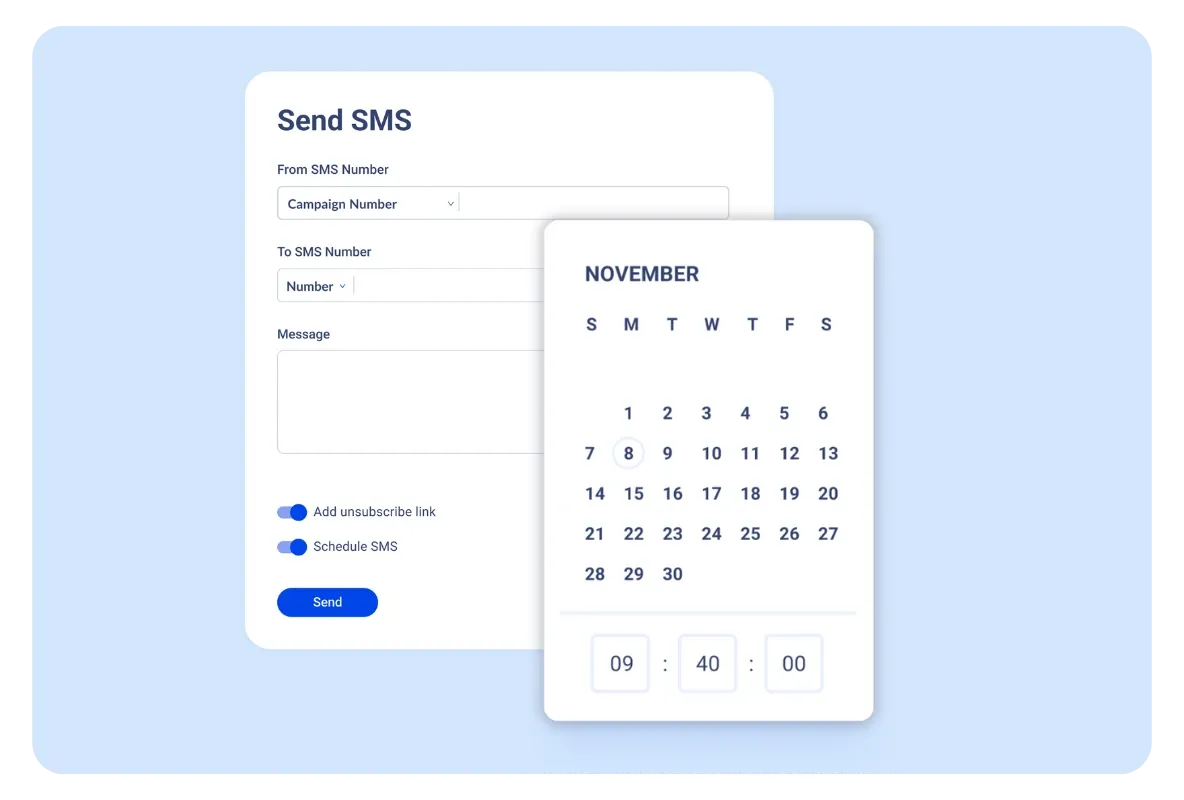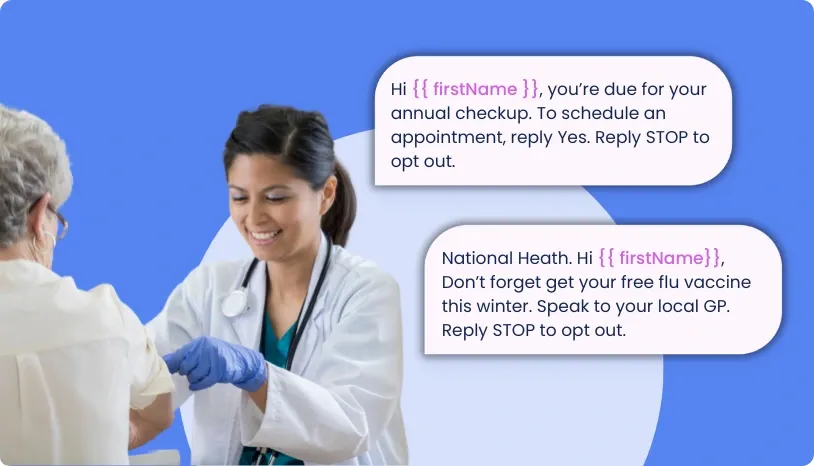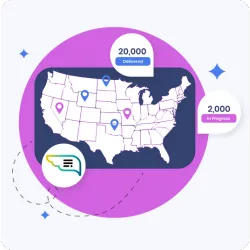Rated 4.9 stars on
Google Reviews
Table of Contents
Gather Consent for Sending SMS
Text messaging or SMS in healthcare is an important tool for sending appointment reminders, health updates, and other important information. If you plan to send online SMS messages in your medical practice or pharmacy, you must gather patient consent first. This guide details the process of choosing a HIPAA compliant SMS provider, HIPAA compliant text messaging consent and explains the steps for 10DLC (10-Digit Long Code) registration.

What is HIPAA Text Messaging Compliance?
HIPAA Regulation
HIPAA mandates that any communication containing Protected Health Information (PHI), such as patient names and identifiable health details, must be secure. The 2017 HHS guide states that healthcare organizations need to select a secure online text message service that is HIPAA complaint before sending messages to patients. Notifyre's HIPAA compliant SMS service is also ISO 27001 certified, and uses AES 256-bit encryption to ensure that text messages are securely stored, safeguarding patient information. Notifyre also offers comprehensive audit trails and user access controls, features all required to meet HIPAA compliance. Notifyre’s enterprise security features have also been built for medical organizations with BAA’s available.
TCPA Text Messaging Compliance
The Telephone Consumer Protection Act (TCPA) regulates the use of automated calling systems and text messages across the United States. The TCPA mandates that an organization must obtain explicit written permission from patients prior to sending them text messages. This permission must be well-documented and should clarify the nature of the messages patients will get and the process for opting out. Using an online SMS service makes managing patient consent and subscriber details easy through contact groups and SMS keyword text.
Why Send a HIPAA Text Messaging Consent Form to Patients?
Securing informed consent for text messaging under HIPAA is vital for protecting health information and maintaining trust. It ensures compliance with 10DLC regulations, safeguards patient privacy, and gives patients control over their communication preferences while addressing text messaging risks.

10DLC Requirements for HIPAA Text Messaging
10DLC, or 10-Digit Long Code, refers to a standard phone number used for sending application to person (A2P) SMS messages in the U.S. 10DLC numbers are ideal for business and healthcare messaging, such as appointment reminders and customer service updates. Not only is consent required for HIPAA compliance, but it is mandatory when using a 10DLC phone number. During 10DLC registration you will need to provide a summary of how your organization collected phone numbers and how consent was obtained.
HIPAA Text Messaging Consent Form Example
Whether you use an online form or a paper form that patients fill in at the time of an appointment you should include disclaimer text to gather consent.
By providing your mobile number, you agree to receive texts messages from Notifyre. Msg & data rates may apply. Reply STOP to unsubscribe. View the Notice of Privacy Practices.
Ensure that patients have access to your Notice of Privacy Practices (NPP), these should be linked at the bottom of your website or attached to the paper form where consent is given. Your NPP should detail how their information will be used and protected.
Best Practices for Obtaining HIPAA Text Messaging Consent
1. Be Transparent
Ensure patients are fully aware of why their phone numbers are being collected and how they will be used. Clearly explain the nature of the messages they will receive, including frequency and any associated costs.
2. Collect Consent
Secure written consent from patients before sending text messages. This can be obtained through a written form, a digital consent checkbox, or during the patient’s registration process.
The consent form should include:
The specific purpose of the text messages
The expected frequency of messages
A statement that consent is not a condition for receiving treatment
Instructions on how to opt out of receiving future messages
3. Safely Store Consent Records
Keep thorough records of all consent forms to demonstrate compliance with regulations. This documentation should include the patient’s consent date and details about what they agreed to receive.
4. Provide Opt-Out Method
Provide patients with an easy method to opt out of text messages. Include simple instructions in each message, like replying "STOP" to unsubscribe, and make sure it's easy for patients to opt out.
Navigating Consent and Compliance: From HIPAA Best Practices to 10DLC Registration with Notifyre
Obtaining informed consent is essential for HIPAA compliant communication with patients. After creating a HIPAA text messaging consent form, the next step is to select a HIPAA compliant SMS service and register a 10DLC number. Notifyre offers comprehensive security features and 5-star service with one-on-one support for organizations getting started with online text messaging and online fax. If you need assistance with SMS consent procedures or 10DLC registration, our team is here to help
Book a demo with us today!
Explore how Notifyre can transform your medical practice and improve patient communication and health outcomes.
10DLC Registration
Everything you need to know about 10DLC compliance to meet SMS industry regulations in the United States.
 10DLC Registration Guide
10DLC Registration Guide 


Secure, safeguarded SMS and fax service
Our SMS and fax gateway is compliant with privacy laws, ensuring your business data stays secure. Notifyre’s secure messaging tools keeps your online fax secure and SMS data protected at all times.








